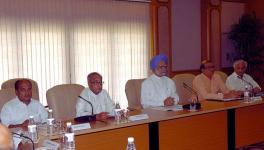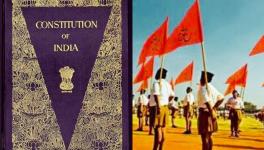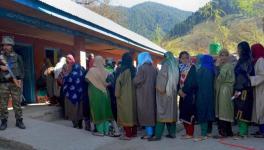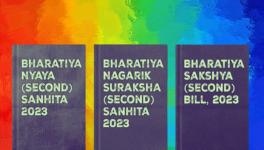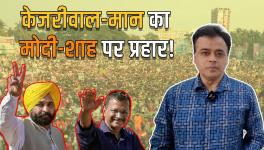In J&K, BJP Wields Delimitation as a Weapon Against Democracy
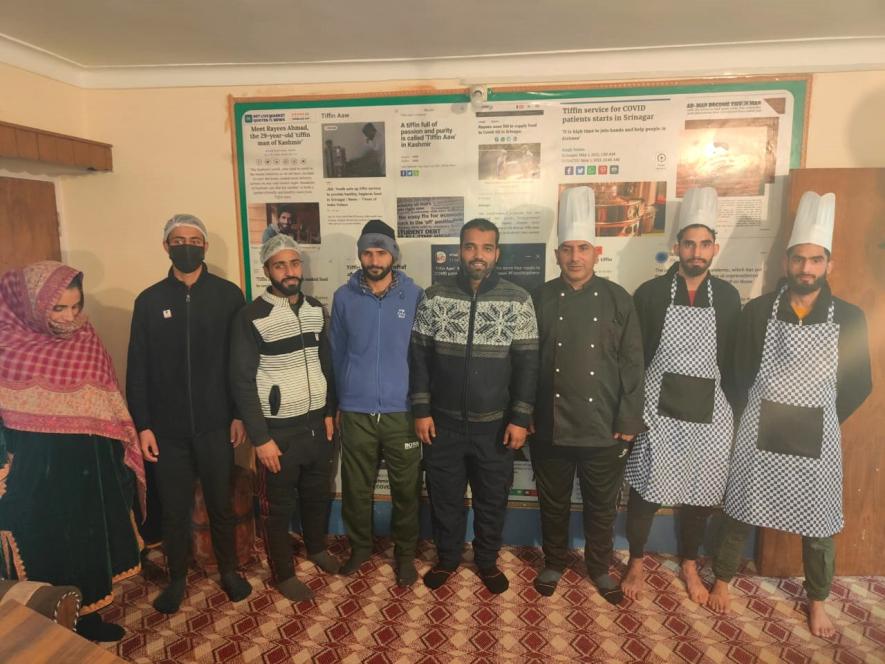
When Prime Minister Narendra Modi called an all-party meeting of Kashmiri leaders in June, everyone expected discussions on restarting the political process in the Valley. Nothing came of it except a group photograph, but the government still deemed it “a good beginning”. However, there were no follow-ups, and the exercise ultimately ended as a headline-management event. Time and again, Union Home Minister Amit Shah has said that the political process—read Assembly election in Jammu and Kashmir—would take place only after the delimitation process is complete. Thereafter, statehood would get restored in Jammu and Kashmir.
However, political parties in the Valley were never excited by the prospect of delimitation and always had deep apprehensions about its real purpose. Now, a part of the recommendations of the Delimitation Commission are out, and these apprehensions have been proved correct.
Valley not Overrepresented in J&K Assembly
The erstwhile state of Jammu and Kashmir was the only Muslim-dominated state of India. It always had a Muslim head of state, and the politics here was Valley-centric. Except for Ghulam Nabi Azad, all other chief ministers were from the Valley. This is a natural situation, since the Jammu region has the largest geographical area while the Valley has the highest population of its three regions including Ladakh. Traditionally, the RSS and BJP have their support base in the Jammu region. Contrived allegations of Muslim appeasement and over-representation of the Valley are long-standing ploys of the RSS-BJP in Kashmir. But the facts deny these allegations.
Let us take the case of the last delimitation exercise in 1995. It was based on Census 1981 since rampant insurgency and breakdown of state machinery in the region prevented the next Census operation. According to Census 1981, the percentage share of Kashmir in the total population of Jammu and Kashmir was 56.15%, while Jammu’s was 43.84%. In its delimitation exercise under the Jammu and Kashmir Representation of the People Act, 1957, out of 87 seats, Jammu was allocated 37 Assembly seats and Kashmir 46 seats. It means 55.42% representation of Kashmir and 44.57% representation of Jammu in the Assembly. It clearly establishes that Jammu, not Kashmir, was overrepresented in the Assembly.
In 2002, then chief minister Farooq Abdullah froze the carving up of new electoral units. The move was supposed to be in line with a similar moratorium across the country. However, Jammu politicians dragged the matter to the Supreme Court, which upheld the freeze.
Since 1957, the number of seats in Jammu has increased by double compared with the increase of seats in the Valley. In the first Assembly election in 1957, Jammu was allotted 30 seats, and Kashmir, 43. So, Jammu had seven more seats in 1995, and Kashmir gained only three additional seats.
The bogey of over-representation of Kashmir in the Jammu and Kashmir Assembly is an old right-wing ploy to propagate the false narrative that a Muslim chief minister in a Muslim-dominated state is an injustice against Hindu-dominated Jammu. The BJP always strived for a Hindu chief minister of Jammu and Kashmir. This propaganda helped the BJP establish its hegemony in Jammu in the 2014 election, in which it replaced the Congress party as the dominant force by winning 25 Assembly seats and decided to share power with the Peoples Democratic Party.
But this was not enough to fulfil right-wing aspirations, which opposed so-called Kashmiri dominance over the politics of Jammu and Kashmir. An absolute majority in Parliament enabled the right wing to implement its design in Kashmir by dismantling the elected Assembly, abrogating autonomy, and snatching statehood.
Abrogation and New Delimitation Body
The abrogation of Article 370 of the Constitution annihilated the legal status of the Jammu and Kashmir Representation of the People Act, 1957, and a new body, the Jammu and Kashmir Delimitation Commission, was constituted under the J&K Reorganisation Act, 2019. It was asked to carve out Assembly and parliamentary seats in the Union Territory. The government initiated a similar exercise in four northeastern states, but they were removed from its purview in March 2021. Nevertheless, the government is hell-bent on delimitation in Jammu and Kashmir and granted the commission a one-year extension.
The Act mandates the new Assembly to have 90 seats in all. Thus, the commission is only responsible for redistributing seven additional seats amongst Jammu and the Valley. It recommended allocating six out of these seven seats to Jammu, leaving just one for Kashmir, inviting severe criticism from all the political parties in Kashmir except the BJP.
Justification and Population Debate
To justify its recommendation, the commission took the geographical argument. It said “it has proposed carving out an additional constituency in some districts to balance the representation for geographical areas with inadequate communication and lack of public conveniences given their excessive remoteness or inhospitable conditions on the international border”.
The commission chaired by Justice (retired) Ranjana P. Desai has said that its proposals to allocate Assembly Constituencies (AC) to districts involved placing all 20 districts in three broad categories, with a 10% margin of error for the average population per AC. Thus, it allocated one seat each in the Kathua, Samba, Rajouri, Reasi, Doda, and Kishtwar districts in the Jammu division and Kupwara in the Kashmir valley.
The commission has the elected representatives of the erstwhile state as its associate members. However, since there is no Assembly in the Union Territory, only five Members of Parliament from Kashmir are its associate members: Three are from the National Conference and two from the BJP. After an initial boycott, the National Conference members participated in its meetings. It must be noted that recently, Hasnain Masoodi, one of the three National Conference MPs from Kashmir, said that as “associate members”, they have no right to dissent, no veto power. Their disagreement would not go on the record, nor would their viewpoint get registered.
Further, the commission has almost entirely ignored the population criteria while placing undue emphasis on geography. Census 2011 records that Kashmir has an advantage of 15 lakh voters over Jammu. Thus, the population share of Kashmir in the Union Territory is 56.2%, while Jammu has 43.8%. If the commission’s proposals are implemented, the share of Kashmir in the new Assembly will fall to 52.2% (4% lower than its share in the population), while Jammu will get a 47.8% share (4% higher than its population share). It is this angst that Muhammad Ashraf Mir, the former law secretary of Jammu and Kashmir, expressed when he said, “One constituency has been carved out for 1,25,082 people in Jammu Division. For Kashmir Division, the same constituency has been established for 1,46,563 people. In effect 10,09,621 people of the Valley have been disenfranchised.”
In addition, out of the newly added seats, Kathua, Samba and Udhampur are predominantly Hindu seats, where the Hindu population has a more than 85% population share, while Kishtwar, Doda and Rajauri have 35-45% Hindu populations. Therefore, the commission’s recommendations would reduce the number of Muslim members in the Jammu and Kashmir Assembly and help the BJP install a Hindu chief minister in the Muslim-majority state.
Colonising Kashmir: New Land Use Policy Plus Delimitation
Since the BJP came to power in 2014, its leaders have tried everything possible to demoralise the Kashmiris. The abrogation of Article 370 was the first major step, followed by measures to control the press and civil society. The party exploited the situation in Kashmir to provoke communal sentiments in the rest of the country and snatch whatever democracy existed in the erstwhile state. Jammu and Kashmir have not had an Assembly for more than two years now. The much-hyped District Development Council (local body) or DDC election produced only an army of representatives, who have no power to intervene while the Centre continues its authoritarian rule over the region.
The Administrative Council (AC), chaired by Lieutenant Governor Manoj Sinha, took another significant decision earlier this month. It approved the regulations framed by the Board of Revenue to convert agricultural land into non-agricultural uses. The new regulations empower the District Collector to permit this change in land use as notified under the rules by the Board of Revenue. The deadline to grant permission for change in land use is 30 days after applying and the rules provide for “deemed approval” if no decision is taken.
The District Collector can permit land-use change for up to 12½ standard acres of land (with a fee of 5% of its market value under the Indian Stamps Act, 1899). Moreover, the regulations exempt the need to seek permission if the conversion is to construct a residence, or farm-related buildings and storage, with a ceiling of 400 square meters. The state’s political parties resisted this, but the government ignored them, as usual.
This one step of allowing land use to be changed can be instrumental in capsizing the benefits of the revolutionary land reforms under former chief minister Sheikh Abdullah. Contrary to popular perception, agriculture is one of the dominant economic activities in Kashmir, especially in rural areas. Sheikh Abdullah sided with India due to assurances that his promise of land reform—the backbone of his party’s legendry Naya Kashmir programme—would get fulfilled.
Recall that the right-wing, along with Dogra forces in Jammu, opposed the abrogation of Article 370 only after land reforms assured land to the tiller, which gave way to the breakdown of the landed aristocracy in Jammu and Kashmir. The Bharatiya Jana Sangh leader Syama Prasad Mookerjee, who never resisted the proposal of Article 370 in the Constituent Assembly, then emerged as leader of the violent anti-Article 370 agitations, and the rest is history.
Authorising the District Collector to permit changes in land use will transform the rural landscape of Jammu and Kashmir and subvert the gains of land reforms—but in the name of development. Before making these decisions, the Centre and the administration of Jammu and Kashmir took neither its political representatives nor other stakeholders into confidence. It seems the central government wishes to implement its design to subvert the autonomy and the self-respect of Kashmir, change the demographic equation of the Valley and upset the political equation in favour of Jammu.
Subverting Aspirations Never Road to Long-term Peace
It is not as if earlier governments allowed the free play of the democratic process in Kashmir. Except for two or three elections, most were rigged to put a puppet in charge. Successive central governments reduced Article 370 to a caricature of the original, and the draconian AFSPA was applied around three decades ago, and so on. But the present regime is hell-bent on snatching whatever little autonomy was left and crushing the aspirations and self-respect of the Kashmiri people. These are moves to convert Kashmir into a colony of the Hindutva scheme of nationalism. Kashmiris are already treated as second-class citizens without the civil and democratic rights of citizens of a democratic nation.
The latest moves to limit democratic power via delimitation and Kashmir’s economic autonomy by meddling with land-use rules will create yet another resentment among the Kashmiris and hamper any scheme for peace and prosperity in the Valley. It will only unleash more wounds on their self-respect and hurt their sentiments, giving anti-India forces ammunition to create long-term problems and ignite the already tense socio-political scenario in the Valley.
Right-wing plans may seem rewarding in terms of reaping it political mileage in the rest of the country. It may also seem the region is inching towards their dream of a Hindu premier in Muslim Kashmir. However, these steps are not sustainable in the long term, even for the right. History shows that no authority can survive in the face of a discontented majority.
Ashok Kumar Pandey is the author of Kashmirnama and Kashmir and Kashmiri Pandits. The views are personal.
Get the latest reports & analysis with people's perspective on Protests, movements & deep analytical videos, discussions of the current affairs in your Telegram app. Subscribe to NewsClick's Telegram channel & get Real-Time updates on stories, as they get published on our website.












